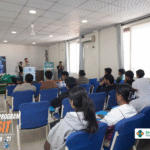Nepali cuisine, known for its unique blend of flavors, diverse ingredients, and cultural richness, holds a significant place in the hospitality industry. For Bachelor of Hotel Management (BHM) students, learning to prepare traditional Nepali dishes is more than just a culinary exercise; it’s an immersive experience that combines cultural appreciation, skill enhancement, and industry relevance.
1. Cultural Understanding and Preservation
Nepali cuisine represents the essence of Nepal’s diverse cultural heritage. By engaging in the preparation of traditional dishes, students gain deeper insights into the cultural significance and history behind each recipe. This understanding is essential for promoting authentic Nepali food to international and domestic guests. Additionally, by learning these recipes, BHM students contribute to preserving and passing down the culinary traditions that define Nepal.
2. Skill Development in Authentic Cooking Techniques
Preparing Nepali cuisine involves mastering a variety of traditional techniques, such as tempering spices, slow-cooking stews, and using fresh, locally sourced ingredients. Students learn the art of balancing flavors, from the tangy spiciness of achar (pickle) to the comforting richness of dal-bhat-tarkari (lentils, rice, and vegetable curry). This hands-on experience sharpens their culinary skills, making them adept at creating authentic and flavorful dishes that resonate with customers.
3. Practical Relevance in the Hospitality Industry
The growing demand for Nepali cuisine, both locally and internationally, makes this training highly relevant for aspiring hoteliers and chefs. By mastering Nepali dishes, students position themselves as versatile professionals who can cater to the tastes of a wide range of clientele. Whether managing a local restaurant or working in a global hospitality chain, their expertise in Nepali cuisine adds value to their professional portfolio.
4. Enhancing Creativity and Presentation Skills
BHM practicals also encourage students to innovate while adhering to traditional roots. They experiment with modern plating techniques and fusion ideas, ensuring that Nepali dishes appeal to contemporary palates without losing authenticity. This creative exercise boosts their ability to present dishes attractively, an essential skill in the competitive hospitality industry.
Conclusion
Menu 1, featuring Nepali cuisine, is more than just a practical exercise for BHM students; it’s a comprehensive learning experience that equips them with cultural knowledge, technical expertise, and industry readiness. By embracing the essence of Nepali cuisine, these budding professionals are prepared to excel in the culinary arts and promote Nepal’s rich heritage on a global platform.
This article captures the multifaceted importance of Nepali cuisine for BHM students and its impact on their education and career prospects.









